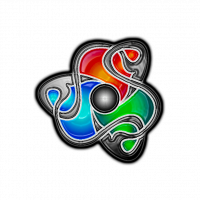Howdy, Stranger!
It looks like you're new here. If you want to get involved, click one of these buttons!
Quick Links
Categories
- 7.9K All Categories
- 12 Help with translations
- 4.3K General questions
- 107 Roadmap
- 360 Game & application design
- 322 Plugins
- 71 User experience
- 75 Marketplace
- 294 Code snippets
- 34 Building a team?
- 269 Suggestions & requests
- 354 Announce your apps made with Gideros.
- 91 Step by step tutorials
- 679 Bugs and issues
- 195 Introduce yourself
- 246 Announcements
- 107 Forum talk
- 405 Relax cafe
Code for landscape or portrait
 SinisterSoft
Maintainer
SinisterSoft
Maintainer
Here is some code to help you make your games landscape or portrait.
First make a new player with the project auto rotate turned on and also the mode to enable both landscape and portrait in the 'require' plugin. This code is for when the scaling has been set to 'letterbox', 'landscapeLeft'.
Then include this in at the beginning of your code (a lot of this isn't needed, but you may find it useful):
Then later in your code add this:
The code in the resize routine may seem a little complicated, but it copes with bugs on some hardware (amazon!) starting upside down if you set the orientation after getting the orientation and it hasn't been changed automatically. It also allows you to test in the normal Windows/OSX player and use the auto-sizing to stretch your screen from landscape to portrait aspect ratios and it figure it out.
If your positioning code you can use width2 & height2 to have the middle of the display, maxWidth & maxHeight to have the real screen sizes, etc...
First make a new player with the project auto rotate turned on and also the mode to enable both landscape and portrait in the 'require' plugin. This code is for when the scaling has been set to 'letterbox', 'landscapeLeft'.
Then include this in at the beginning of your code (a lot of this isn't needed, but you may find it useful):
device={application:getDeviceInfo()} print(device[1]) print(device[2]) print(device[3]) print(device[4]) print(device[5]) if device[5]=="TV" then tv=true end if device[1]=="Windows" or device[1]=="Mac OS" then --application:set("cursor","blank") pc=true premium=true --tv=true elseif device[1]=="Web" then web=true premium=true elseif device[1]=="Win32" then win32=true application:setFullScreen(true) tv=true premium=true elseif device[1]=="WinRT" then winrt=true premium=true elseif device[1]=="Windows Phone" then winrt=true slow=true premium=true elseif device[1]=="Android" then android=true if device[3]=="Amazon" then kindle=true if sub(device[4],1,3)=="AFT" then tv=true if device[4]=="AFTM" then slow=true end end elseif device[3]=="OUYA" then ouya=true tv=true slow=true elseif device[3]=="Geniatech" then tv=true if sub(device[4],1,9)=="GameStick" or device[4]=="TotoTV Stick" then gamestick=true slow=true end elseif device[3]=="HardKernel Co., Ltd." then tv=true hardkernel=true if device[4]=="ODROIDC" then odroidc=true slow=true end elseif device[4]=="Nexus Player" then tv=true nexusplayer=true elseif device[3]=="razer" then tv=true razer=true if device[4]=="Forge" then forgetv=true end elseif device[3]=="IRIVER" then slow=true end elseif device[1]=="iOS" then ios=true if device[3]=="AppleTV" then tv=true appletv=true end end if application:isPlayerMode() then secret=true end if web then application:setOrientation("landscapeLeft") end local orientation=application:getDeviceOrientation() local oldOrientation=orientation local width=application:getLogicalHeight() local height=application:getLogicalWidth() local minX,minY,maxX,maxY=application:getDeviceSafeArea(true) local maxWidth,maxHeight=maxX-minX,maxY-minY local width2,height2=width/2,height/2 local landscape=true |
function resize(e) print("resize") width=application:getLogicalHeight() height=application:getLogicalWidth() minX,minY,maxX,maxY=application:getDeviceSafeArea(true) maxWidth,maxHeight=maxX-minX,maxY-minY landscape=true if pc then if maxHeight>maxWidth then orientation="portraitLeft" landscape=false else orientation="landscapeLeft" end else orientation=application:getDeviceOrientation() local portrait=false if sub(orientation,1,8)=="portrait" then portrait=true end if (not e and portrait) or orientation~=oldOrientation then oldOrientation=orientation application:setOrientation(orientation) end if portrait then landscape=false width,height=height,width minX,maxX,minY,maxY=minY,maxY,minX,maxX maxWidth,maxHeight=maxHeight,maxWidth end end print(orientation) width2,height2=width/2,height/2 -- do anything here you need to do only once on a resize end |
If your positioning code you can use width2 & height2 to have the middle of the display, maxWidth & maxHeight to have the real screen sizes, etc...
Coder, video game industry veteran (since the '80s, ❤'s assembler), arrested - never convicted hacker (in the '90s), dad of five, he/him (if that even matters!).
https://deluxepixel.com
https://deluxepixel.com
Tagged:
+1 -1 (+7 / -0 )Share on Facebook



